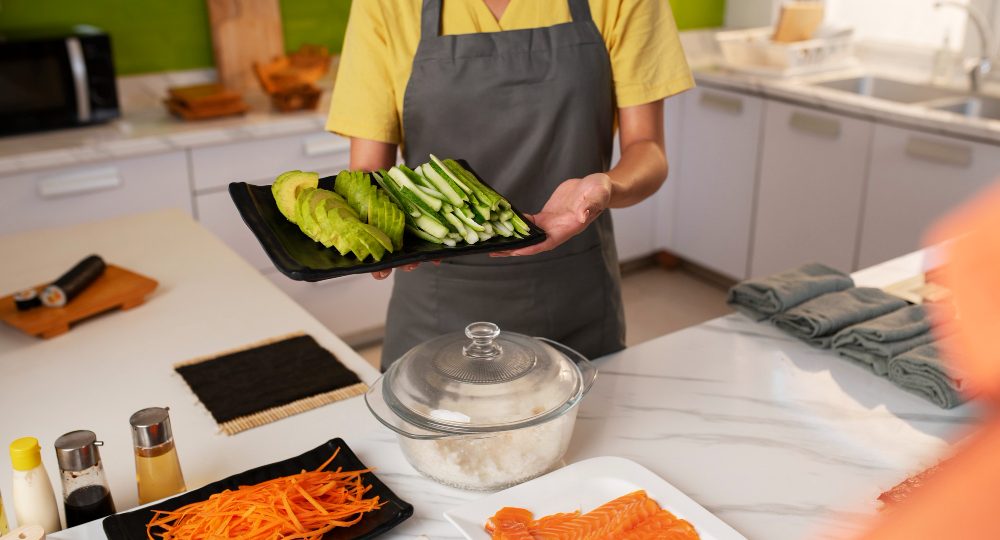
How Many Times Can You Microwave Cooked Food? Understanding Safety and Quality
Microwaving leftovers is a common practice, offering a quick and convenient way to enjoy meals without the need for additional cooking. However, questions often arise about how many times you can safely microwave cooked food. Balancing safety, quality, and nutritional value is crucial to ensuring that your meals are not only convenient but also healthy. This article explores the factors that determine how often you can reheat food in the microwave and offers tips to keep your leftovers safe and tasty.
Understanding the Basics: Microwave Reheating and Food Safety
The microwave works by using electromagnetic waves to heat the water molecules in food, which in turn heats the food itself. While microwaving is an efficient way to reheat leftovers, it’s important to consider food safety guidelines to prevent foodborne illnesses.
The Danger Zone
One key concept in food safety is the “danger zone,” which refers to the temperature range between 40°F (4°C) and 140°F (60°C). Bacteria can grow rapidly within this range, so it’s essential to keep cooked food either below 40°F or above 140°F. When reheating food, make sure it reaches an internal temperature of at least 165°F (74°C) to kill any potential bacteria.
How Many Times Can You Reheat Cooked Food in the Microwave?
There’s no strict limit on how many times you can reheat food in the microwave, but there are important considerations to keep in mind:
1. Quality and Texture Degradation
Each time you reheat food, its quality and texture can deteriorate. For example, proteins like chicken or fish can become tough and dry, vegetables can become mushy, and sauces may separate. To maintain the best possible quality, it’s generally recommended to reheat food only once or twice.
2. Nutrient Loss
Repeated heating can also lead to the loss of nutrients, particularly vitamins and minerals. Some nutrients, like vitamin C, are sensitive to heat and can degrade when exposed to multiple rounds of reheating. While this may not be a major concern for all meals, it’s something to consider if you’re relying on leftovers for a significant portion of your diet.
3. Food Safety Concerns
Reheating food multiple times can increase the risk of bacterial growth, especially if the food isn’t stored properly between reheating sessions. Each time food is cooled and reheated, there’s a window where bacteria can thrive if the food isn’t handled correctly. To minimize this risk, it’s advisable to reheat only the portion you plan to eat rather than reheating the entire dish multiple times.
Best Practices for Reheating Food in the Microwave
To ensure your reheated food is safe and enjoyable, follow these best practices:
1. Store Food Properly
Proper storage is key to maintaining food safety. After cooking, cool leftovers quickly and store them in airtight containers in the refrigerator. Avoid leaving food out at room temperature for extended periods.
2. Reheat Only What You Need
Instead of reheating the entire dish, portion out what you plan to eat and reheat only that amount. This way, the remaining food stays refrigerated and safe for future meals.
3. Stir and Rotate the Food
Microwaves can heat food unevenly, so it’s important to stir and rotate the food during reheating to ensure even heating. This helps prevent cold spots where bacteria could survive.
4. Use a Microwave-Safe Cover
Covering your food with a microwave-safe lid or microwave-safe wrap helps retain moisture and promotes even heating. It also prevents splatters and keeps your microwave clean.
5. Check the Temperature
Always check the internal temperature of reheated food with a food thermometer to ensure it reaches 165°F (74°C). This is particularly important for meats, poultry, and dishes containing eggs.
6. Watch the Time
Microwaving times can vary depending on the wattage of your microwave and the amount of food being reheated. Start with shorter times and add more if needed, checking the food’s temperature regularly.
Which Foods Should You Avoid Reheating Multiple Times?
While many foods can be safely reheated in the microwave, some are more prone to degradation or safety concerns when reheated multiple times:
1. Rice
Cooked rice can harbor bacteria that produce toxins if the rice is left at room temperature for too long. To minimize risk, reheat rice only once, and ensure it reaches the proper temperature.
2. Eggs
Reheating dishes with eggs, such as quiches or scrambled eggs, can lead to an unappetizing texture and potential safety risks. It’s best to reheat egg dishes only once.
3. Seafood
Seafood is delicate and can easily become overcooked and tough when reheated multiple times. It’s better to consume seafood leftovers after a single reheating.
4. Leafy Greens
Leafy greens, like spinach, contain nitrates that can convert to nitrites when reheated, which may be harmful in large quantities. It’s safer to reheat these foods sparingly.
Conclusion
In summary, while there’s no hard rule on how many times you can microwave cooked food, limiting reheating to once or twice is generally advisable to maintain quality, preserve nutrients, and ensure food safety. By following best practices, such as reheating only what you need, storing food properly, and checking temperatures, you can enjoy your leftovers without compromising on taste or safety. The key is to be mindful of how you handle and reheat your food, ensuring that each meal is as delicious and safe as the first.
